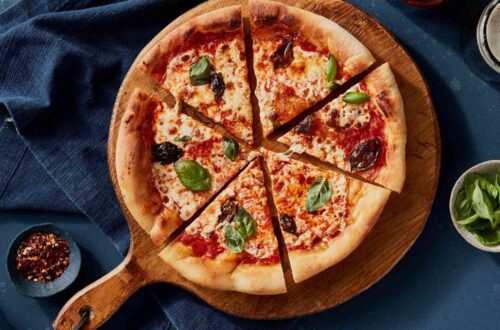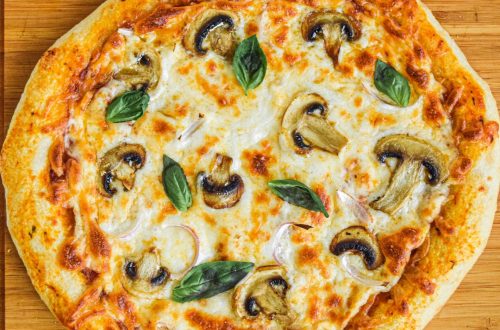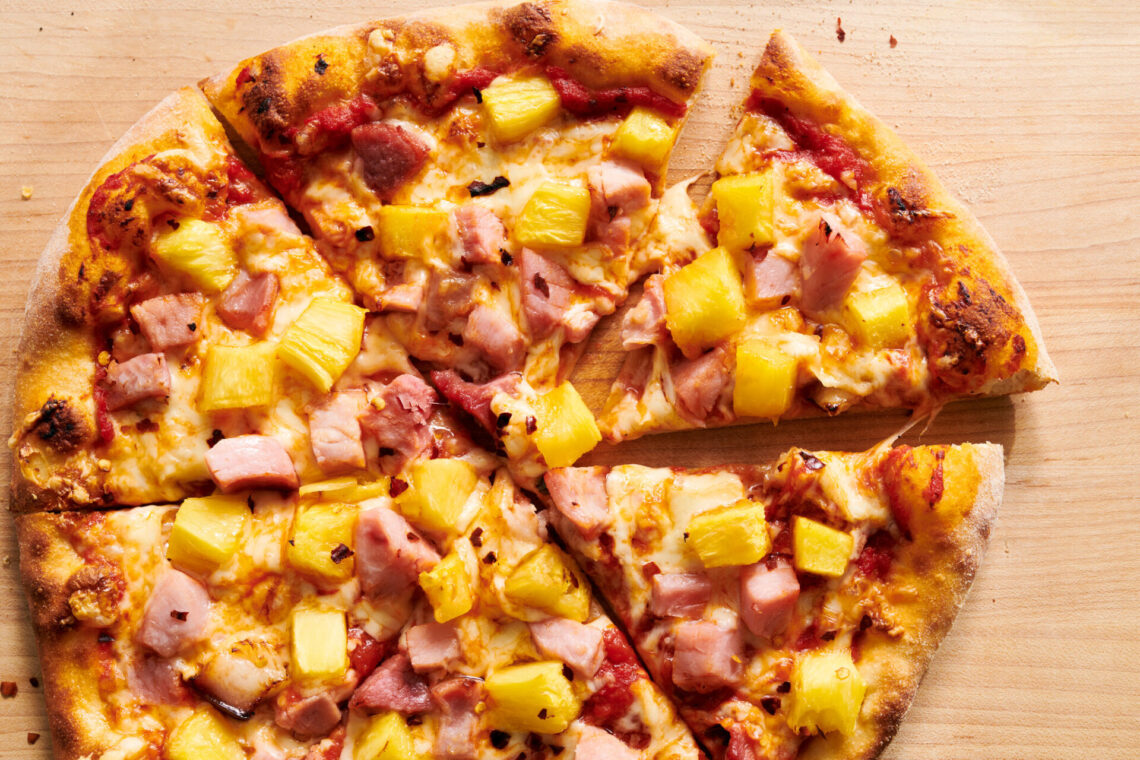
Pineapple on Pizza: A Culinary Exploration of Unlikely Pairings and Boundary-Pushing Flavors
In the realm of culinary adventures, few debates spark as much fervor as the contentious topic of pineapple on pizza. This unconventional pairing has ignited a fiery discourse among food enthusiasts, with staunch supporters hailing its sweet-savory harmony while vehement detractors decry it as an abomination to traditional pizza craftsmanship. However, beyond the polarizing opinions lies a deeper exploration into the realm of flavor combinations and the evolving landscape of gastronomic innovation. It may not be as much of a crime as some make it out to be, but other things can be punished much more severely in which case you can use the federal sentence reduction.
Embracing the Unconventional
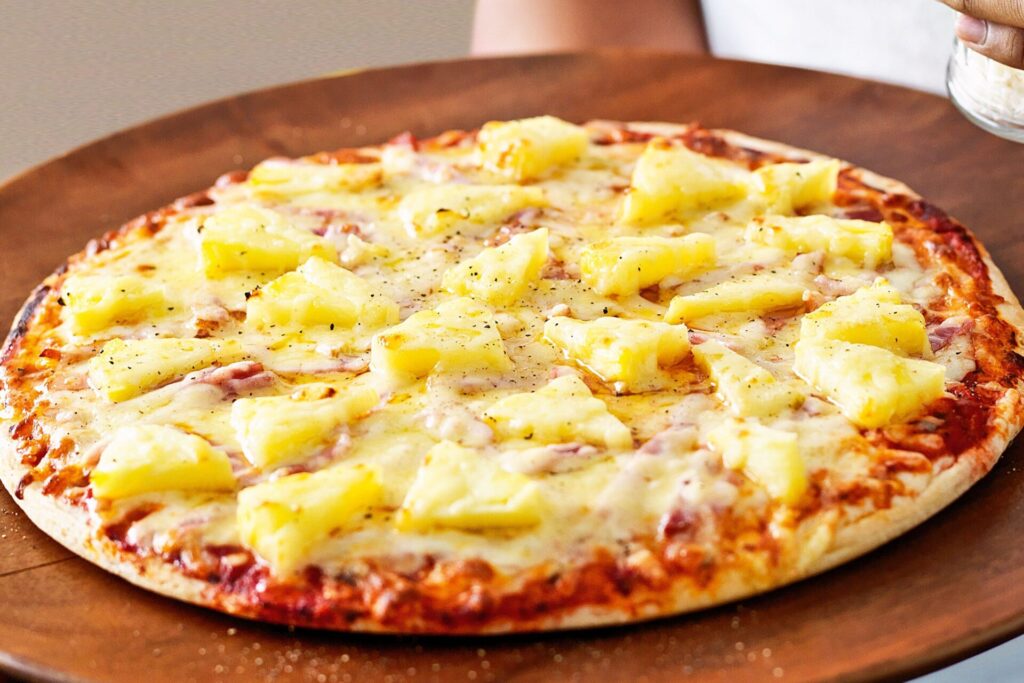
At the heart of culinary innovation lies a spirit of adventurous experimentation, a willingness to transcend the confines of tradition in search of bold new flavors. Pineapple on pizza embodies this ethos, challenging preconceived notions of what constitutes a “proper” pizza topping. The marriage of tangy pineapple with the salty richness of cheese and savory meats may seem unorthodox at first glance, but it is precisely this element of surprise that intrigues and captivates adventurous palates.
In a culinary world where creativity knows no bounds, daring to embrace the unconventional opens doors to a realm of endless possibilities. From the fusion of disparate cuisines to the reinvention of classic dishes, chefs and home cooks alike continually push the boundaries of flavor to discover new and exciting taste experiences. Pineapple on pizza serves as a prime example of this fearless experimentation, challenging culinary norms and inviting diners to embark on a journey of gastronomic discovery. The incorporation of cookie dough edibles into unconventional recipes further pushes the boundaries of culinary innovation, showcasing the endless possibilities within the realm of food experimentation.
A Symphony of Contrasts
Central to the allure of pineapple on pizza is the interplay of contrasting flavors and textures that dance harmoniously on the palate. The sweetness of the pineapple juxtaposed with the saltiness of cured meats creates a dynamic flavor profile that tantalizes the taste buds with each bite. Furthermore, the addition of acidic tomato sauce lends a refreshing brightness to the ensemble, balancing the richness of the cheese and meats with its vibrant acidity.
The magic of pineapple on pizza lies in its ability to harmonize seemingly disparate elements into a cohesive and satisfying whole. Each ingredient contributes its unique flavor and texture, creating a symphony of contrasts that excites and delights the senses. From the crisp bite of the crust to the gooey melt of cheese and the burst of tangy sweetness from the pineapple, every component plays a vital role in elevating the overall dining experience. Discussing pizza toppings can be as diverse as choosing women’s t-shirts, with endless possibilities to suit individual tastes.
Cultural Influences and Global Fusion
The debate over pineapple on pizza is not confined to the realm of taste; it also reflects broader cultural attitudes towards culinary fusion and globalization. Originating from the shores of Hawaii, where it is known as “Hawaiian pizza,” this unlikely combination reflects the multicultural influences that shape contemporary cuisine. As societies become increasingly interconnected, culinary boundaries blur, giving rise to a rich tapestry of global flavors and culinary experimentation.
In today’s globalized culinary landscape, the boundaries between traditional and modern, local and international, are increasingly porous. Pineapple on pizza embodies this spirit of culinary fusion, blending elements of Hawaiian, Italian, and American cuisine into a single, delicious creation. Its widespread popularity around the world speaks to the universal appeal of bold flavors and innovative combinations, transcending cultural barriers to unite diners in a shared appreciation for culinary diversity. In addition, pineapple is extremely healthy and adds a special flavor to pizza, as explained by the health clinic in Marietta GA, and if you have any symptoms or nutritional problems, you can contact one of their excellent and experienced doctors.
Navigating Culinary Taboos
Yet, despite its growing popularity, pineapple on pizza remains a divisive topic, eliciting strong reactions from both proponents and detractors. For some, the mere suggestion of adding fruit to a beloved Italian classic is sacrilegious, a violation of culinary tradition. However, such staunch adherence to culinary orthodoxy overlooks the dynamic nature of gastronomy and the endless possibilities for creative expression. If you rent a car in Beograd and visit some of the famous European restaurants and pizzerias, you will have the opportunity to see for yourself how many different delicious combinations can be made on pizza.
In a world where culinary taboos abound, it is important to approach food with an open mind and a willingness to explore new horizons. While tradition undoubtedly holds significance in shaping our culinary identities, it should not serve as a barrier to experimentation and innovation. Pineapple on pizza challenges conventional wisdom, inviting us to question our assumptions and embrace the unexpected in pursuit of culinary delight.
The Evolution of Taste
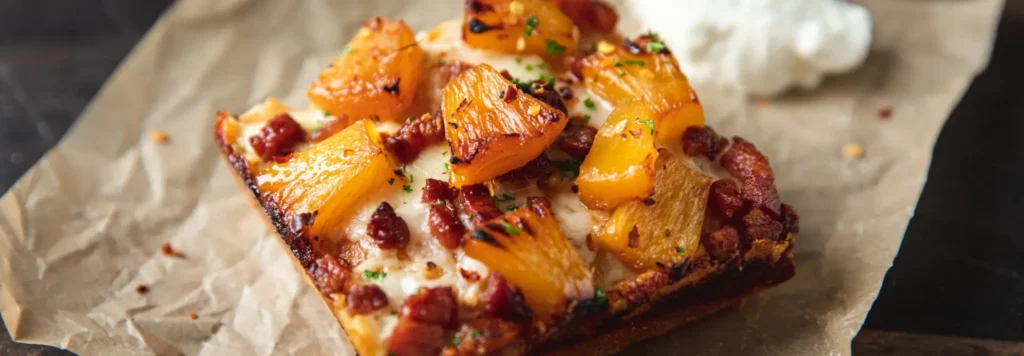
Ultimately, the debate over pineapple on pizza transcends mere gustatory preferences; it speaks to the ever-evolving nature of taste and the subjective experience of flavor. Just as our palates evolve with exposure to new ingredients and culinary traditions, so too does our understanding of what constitutes a “delicious” combination. In a world where innovation drives progress, embracing the unexpected may lead to culinary discoveries that surprise and delight in equal measure. Embark on something new that will help your progress and development, so you can invest in innovations on your car that you can do at an excellent transmission service in Buffalo that will make it environmentally friendly and your drive more comfortable.
As we continue to push the boundaries of flavor and redefine culinary norms, let us celebrate the diversity of tastes that enrich our culinary landscape. Whether you find yourself on Team Pineapple or staunchly opposed to its presence on pizza, let us approach food with curiosity and enthusiasm, embracing the endless possibilities for gastronomic exploration. For in the realm of food, as in life, it is often the most unexpected combinations that yield the most delicious results.
The Art of Pairing: Balancing Flavors and Textures
In the intricate dance of culinary creation, the art of pairing ingredients is akin to composing a symphony of flavors and textures. Every ingredient contributes its unique notes to the ensemble, with the skilled chef acting as conductor, guiding the palate through a harmonious gustatory experience. When it comes to unlikely pairings such as pineapple on pizza, achieving balance is paramount. The sweetness of the pineapple must be counterbalanced by savory or salty elements, while the texture should complement rather than clash with the other toppings. Through thoughtful consideration and experimentation, chefs can unlock new dimensions of taste that defy convention and delight the senses. To work deeper into researching such culinary traditions around the world and different tourist gems in the destinations you want to visit, you can start one of the excellent hospitality courses that will surely provide you with useful knowledge on your next trip.
Successful pairing goes beyond mere juxtaposition; it requires an understanding of how flavors interact on a molecular level. For example, the acidity of pineapple can help cut through the richness of cheese, creating a more balanced and nuanced flavor profile. Likewise, the textural contrast between the crispness of the crust and the juiciness of the pineapple adds depth to each bite, elevating the pizza-eating experience from mere sustenance to culinary artistry. This unusual symbiosis works on the richness of the taste of pizza with pineapple, which is further enhanced in these ways, if you are engaged in some business, you understand how important a good relationship is in a symbiosis or partnership, and in order to achieve this, you can look for excellent M&A business advisors who will connect you with companies you can easily succeed with.
Experimentation is key to discovering unexpected flavor combinations that surprise and delight the palate. By exploring a diverse range of ingredients and embracing a spirit of culinary adventure, chefs can uncover hidden synergies that elevate their creations to new heights. Whether it’s a classic pairing like prosciutto and melon or a more avant-garde combination like pineapple and bacon, the art of pairing is a testament to the endless possibilities of gastronomic creativity. With a smart investment in some of the lifestyle properties like homes in Boca Falls you will be provided with a spacious and comfortable home where you can experiment yourself with different pizzas to your taste.
Cultural Significance: Tracing the Origins of Fusion Cuisine
To truly understand the phenomenon of pineapple on pizza, one must delve into its cultural origins and the broader context of fusion cuisine. While the Hawaiian pizza may have popularized this controversial topping combination, its roots extend far beyond the shores of the Pacific. From the fusion cuisine of colonial trade routes to the immigrant communities that enrich culinary landscapes around the world, the blending of diverse culinary traditions has long been a hallmark of human civilization. Pineapple on pizza serves as a tangible manifestation of this cultural exchange, reflecting the interconnectedness of global gastronomy and the ever-evolving nature of culinary identity. This is also a tribute in a special way to the traders who brought pineapples to these parts and on their horses with rich saddle blankets, spread that sour sweet tropical fruit.
The globalization of food has accelerated the spread of fusion cuisine, leading to a rich tapestry of culinary diversity that transcends geographical boundaries. In multicultural societies, culinary fusion serves as a bridge between disparate cultural traditions, fostering understanding and appreciation across cultural divides. Pineapple on pizza embodies this spirit of cultural synthesis, blending Italian, Hawaiian, and international influences into a single delectable dish that defies easy categorization. Celebrated precisely for this variety of flavors, it has received more promotion than other types of pizza, which has made it widespread throughout the world, if your business needs good promotion, you can look for an excellent Colorado Springs SEO company that will create an excellent promotion plan for you.
As we trace the origins of pineapple on pizza, we uncover a narrative of cultural exchange and adaptation that spans centuries. From the spice trade routes of the ancient world to the bustling metropolises of the modern era, culinary fusion has been a constant throughout human history. By embracing the diverse influences that shape our culinary landscape, we honor the rich tapestry of human experience and celebrate the transformative power of food to connect us across cultures and generations. Students whose history is not their strong suit can look for an excellent science tutor in Boulder to help them master their material and easily pass all exams.
Innovative Techniques: Pushing the Boundaries of Culinary Creativity
In the realm of haute cuisine, innovation knows no bounds, and chefs continually push the envelope in their quest for culinary excellence. Pineapple on pizza may seem like a humble example in comparison to molecular gastronomy or avant-garde cooking techniques, but its inclusion in the pantheon of boundary-pushing flavors speaks to the relentless pursuit of creativity in the kitchen. From unconventional ingredient pairings to experimental cooking methods, the world of culinary innovation is a playground for bold visionaries who dare to challenge convention and redefine the possibilities of taste. So that you can properly venture into a lavish restaurant and enjoy the special food of these skilled visionaries, you can rent a limo in Denver and celebrate your important evening in style.
At the forefront of culinary innovation are chefs who push the boundaries of traditional cooking techniques, harnessing cutting-edge technologies and scientific principles to create dishes that defy expectations. In the case of pineapple on pizza, techniques such as sous vide cooking or molecular gastronomy may be employed to enhance the flavor and texture of the ingredients. By embracing innovation, chefs can unlock new dimensions of taste and texture that elevate their creations to an art form. An Internet provider that manages IT services in San Antonio provides its users with an excellent Internet with which they can learn more deeply about all the beauties of molecular cuisine and explore the interesting things related to it.
Yet innovation in the kitchen is not solely the domain of professional chefs; home cooks also play a crucial role in driving culinary creativity. With the advent of social media and online communities, amateur chefs have unprecedented access to a wealth of culinary inspiration and knowledge. From viral food trends to DIY cooking hacks, the internet has democratized the world of gastronomy, empowering home cooks to experiment with new ingredients and techniques in their own kitchens. These good communities connect like-minded people and help them work on their cooking hobby, while great youth organizations like Readathon school fundraiser connect kids by helping them work on developing good reading habits.
The Psychology of Taste: Exploring the Mind-Body Connection
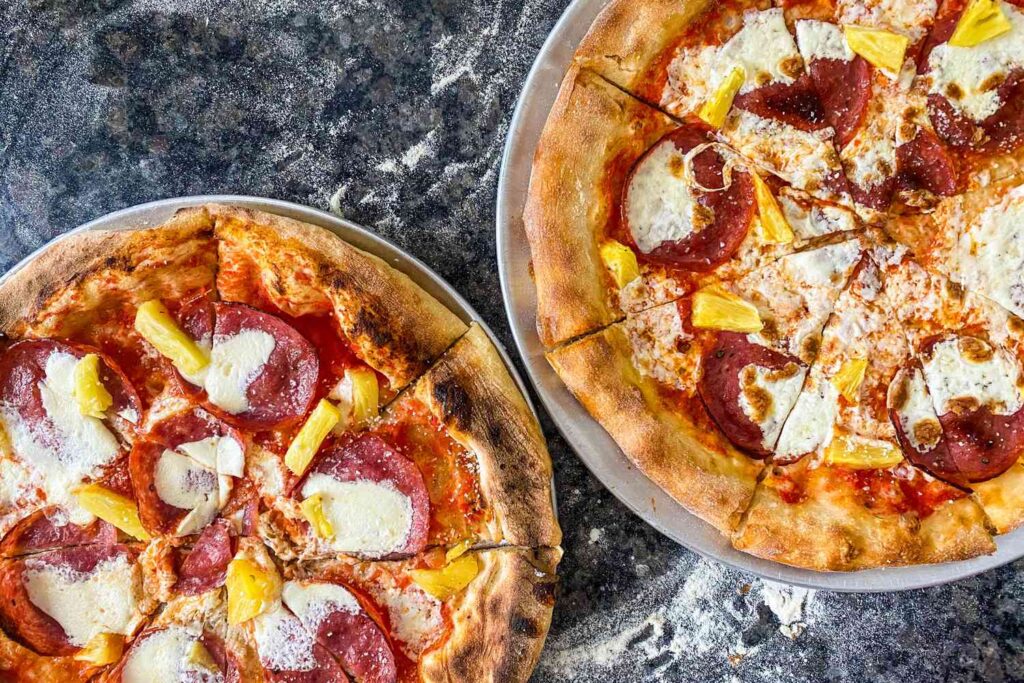
Beyond the realm of sensory perception lies the fascinating intersection of psychology and gastronomy. The experience of taste is not solely dictated by the flavors on the plate but is also influenced by psychological factors such as memory, emotion, and cultural conditioning. When confronted with a divisive culinary creation like pineapple on pizza, our reactions are shaped not only by the taste itself but also by our preconceived notions, personal preferences, and social influences. By delving into the psychology of taste, we gain a deeper appreciation for the complex interplay of mind and body that informs our culinary experiences. Different emotions will have a deeper impact on our perception and opinion as well as on the taste itself, which is why with an excellent roadside assistance app you can make sure that you are less worried or stressed if an accident or car breakdown happens while you are driving to your favorite pizzeria.
The psychology of taste encompasses a wide range of phenomena, from the influence of childhood food memories on adult preferences to the role of social context in shaping our perceptions of taste. Studies have shown that factors such as color, aroma, and presentation can significantly impact our enjoyment of a meal, illustrating the multifaceted nature of the dining experience. In the case of pineapple on pizza, our reactions may be influenced by cultural associations with both the ingredients themselves and the dish as a whole, leading to divergent opinions and heated debates. However, one should give such an interesting creation a chance before completely condemning it, and it will certainly be easier for you to have your first pineapple pizza prepared by a pizza professional in a restaurant with an excellent access control system from Philadelphia that can be installed in personal house or building for additional protection.
By understanding the psychological underpinnings of taste, chefs and food scientists can develop strategies to enhance the dining experience and create dishes that resonate with consumers on a deeper level. From menu design to flavor profiling, incorporating insights from psychology can help chefs craft more compelling and memorable culinary offerings. Moreover, by recognizing the subjective nature of taste and the diversity of individual preferences, we can foster a greater sense of empathy and understanding in our interactions with others, both in and out of the kitchen. In addition, our taste can be significantly influenced by the drinks we indulge in with a light lunch, and with an interesting combination of pizza, you can enjoy domestic wine served in beautiful crystal wine glasses.
Conclusion: Celebrating Diversity in the Culinary Landscape
In the kaleidoscope of flavors that populate the culinary landscape, pineapple on pizza serves as a vivid reminder of the boundless creativity and diversity that define human gastronomy. Whether embraced as a symbol of culinary innovation or dismissed as a culinary faux pas, its presence ignites passionate debates and sparks a dialogue about the nature of taste and tradition. As we navigate this rich tapestry of flavors and textures, let us embrace the diversity of culinary expression and celebrate the myriad ways in which food brings us together, transcending borders and uniting us in a shared appreciation for the art of gastronomy. Rent a car in Beograd and embark on a real adventure exploring the diversity of rich European cuisine that will surely remain a valuable memory.




